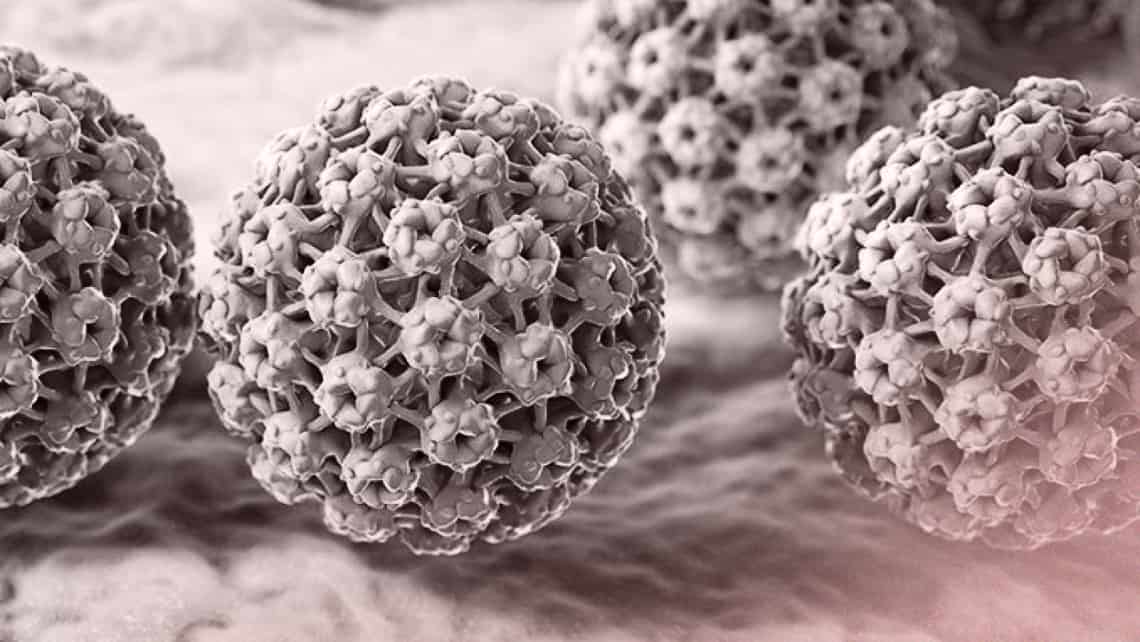
Impact of Human Papillomavirus (HPV) on Semen and Male Reproductive Difficulties
The Human Papilloma Virus, known by its acronym HPV, is a DNA virus that affects the skin and the mucous membranes. The virus infects the basal layers of the epithelium by penetrating through microwounds that often occur during sexual intercourse. It is estimated that 80% of the world’s population will experience an HPV episode over the course of their lifetime.
HPV infection is the most common sexually transmitted disease. Although it is extremely prevalent in sexually active young men and women, it tends to evolve naturally towards spontaneous cure, which is observed in more than 90% of cases.
There are more than 120 known types of HPV, some 40 of which infect the genital and anal area. Approximately 15 of these are oncogenic:
- Cervical cancer is 100% caused by HPV.
- It is also linked to 90% of anal canal cancers.
- 40% of vulvar and penile cancers.
- 12% of oropharyngeal cancers.
The fact that infection can lead to cancer in both sexes highlights how important it is that we change the misconception that it only affects women. There is a widespread mistaken belief that only women are at risk of contracting HPV and that it is their and only their responsibility to prevent it.
That is why more and more countries are including men in their HPV vaccination programmes.
Índice
The Impact of HPV on Male Fertility
Recent studies have shown that HPV infection in men can occur at several levels and can seriously compromise male fertility in a number of ways:
Testicular and epididymal infection
Can lead to pathologies and azoospermia.
Seminal infection
A study carried out between 1999 and 2016 revealed that HPV can be present in the semen of men in the general population (11%), while among those attending fertility clinics, this percentage was as high as 20%. HPV can affect sperm quality at the level of microscopic analysis: low sperm count, low motility and morphological abnormalities.
Sperm DNA damage (DNA fragmentation)
However, one of the most serious alterations is sperm DNA damage (DNA fragmentation). This event can cause instability at the genomic and chromosomal level, as well as cell death (apoptosis).
Cause of implantation failure
It has also been shown that sperm that has already been infected can transfer the virus to the egg during fertilisation, causing damage to it and to the cells of the future embryo. This can compromise their development and consequently lead to miscarriage.
A study of 226 infertile couples showed a reduction in pregnancy rates from 38% to 14% when semen was infected with HPV.
HPV diagnosis and treatment
No routine HPV screening for men has been approved to date. As in women, genital warts can be diagnosed and treated if they are already visible. Bi-/homo-sexual men can also be given an anal Pap test during which cells from the anal canal are biopsied and analysed for the presence of viral DNA by PCR.
HPV particles can be found in every fraction of semen: seminal plasma and sperm.
In situ hybridization techniques have revealed that HPV viral particles are located in the central region of the sperm heah and induce DNA damage.
DNA fragmentation tests can be performed in cases of infertility, but it should be borne in mind that DNA damage is not exclusively a consequence of HPV viral infection. Moreover, the effects may be different, depending on the type of HPV and the site of infection, which explains why scientific studies have not yet been able to demonstrate the molecular mechanisms and specific alterations of the viral particles with any degree of accuracy.
It should also be noted that seminal HPV infection can be temporary. The virus replicates in constantly dividing cells, as occurs during sperm formation (spermatogenesis). As this cycle takes approximately 2 months to run its course, fragmentation levels can return to normal after 3-6 months.
Various sperm selection techniques are routinely carried out in an assisted reproduction laboratory: centrifugation, density gradients and swim-up. It has been shown that none of these tools suffice to completely remove the virus from a semen sample.
However, in 2020, a group of scientists from the University of Padua modified the swim-up technique by adding hyaluronidase, an enzyme that breaks the bond between the virus and the surface of the spermatozoa and completely eliminates HPV from the seminal samples studied.
This new technique has been incorporated in Instituto Bernabeu, where we have designed a protocol for clinical use and a parallel research project.
Prevention
In cases of infertility of unknown cause, HPV has been found in 10-35% of the seminal samples tested. Many recent studies provide data that point to HPV as one of the possible causes of these cases, and emphasize the importance of placing more value on prophylaxis in males, rather than focusing only on females.
If we are to avoid infection by this virus, then it is clear that prevention from very early on in our lives is essential, making correct use of condoms during the entire sexual contact and applying the HPV vaccination plans that are available in our society.
Elisa Serrano, an embryologist at Instituto Bernabeu
